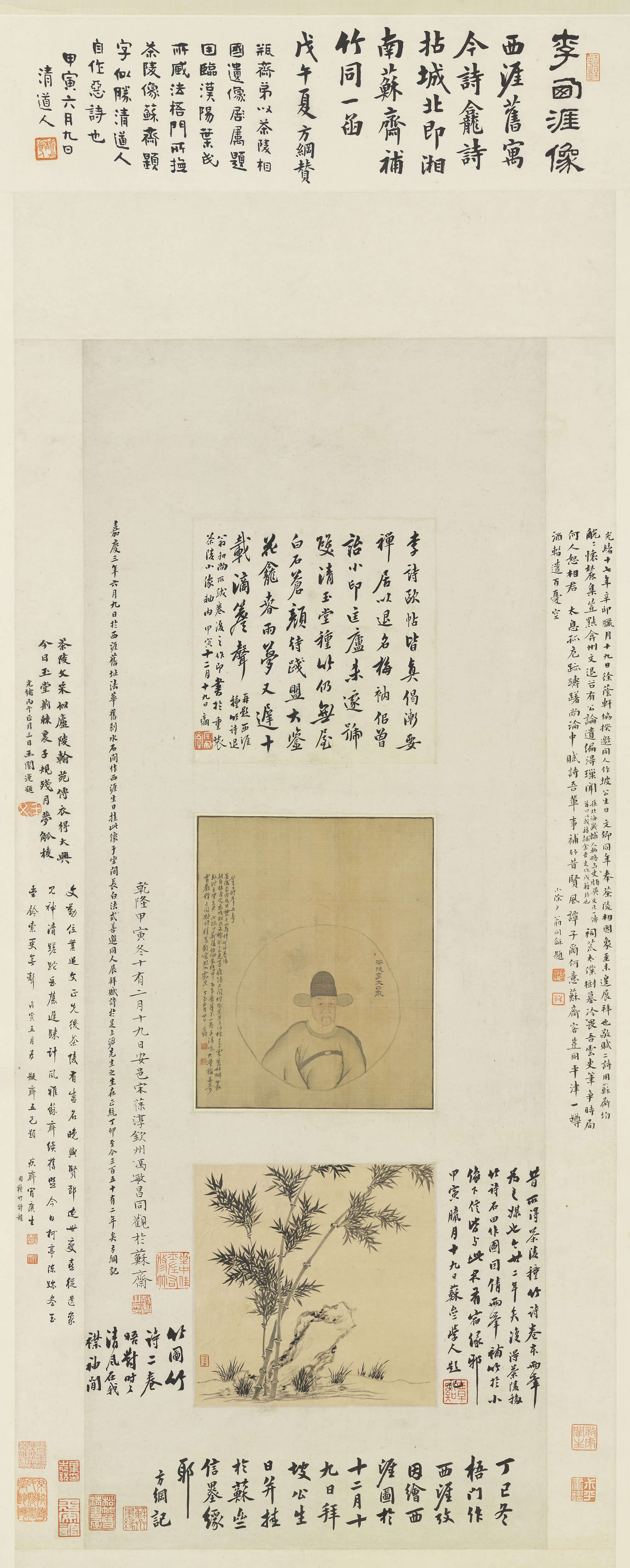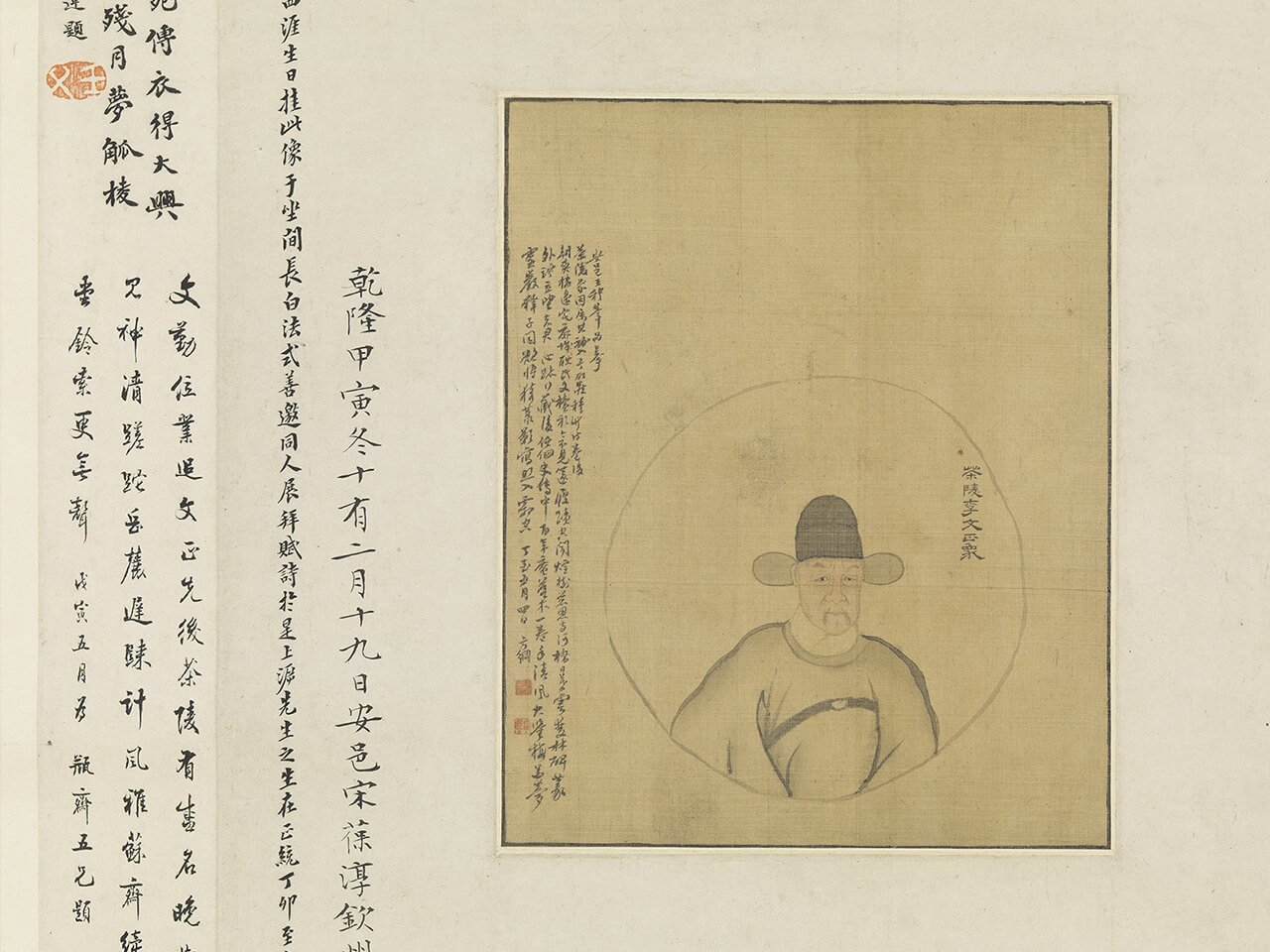In the Name of Birthday Celebrations
Birthday celebrations are common nowadays but were not so in ancient China. Not until the Wei and Jin period, when Buddhism became increasingly influential, did people pay attention to birthdays. However, only a very few individuals, rulers, and religious figures had birthday celebrations. Later, in the Qing dynasty, it became trendy to celebrate the birthday of a cultural idol by holding an elegant gathering on the anniversary of that person’s birth, the most famous example undoubtedly being "Gathering on the Birthday of Su Shi" for this literary icon. Members at such gatherings not only prepared souvenirs of symbolic significance but also viewed painting, calligraphy, and rubbings. They even composed poetry and took out paper to wield a brush in painting and calligraphy, marking a new feature of this period.
-
Inscriptions for a Portrait of Li Dongyang
- Weng Fanggang (1733-1818), Qing dynasty
Bamboo
- Luo Ping (1733-1799), Qing dynasty
"Gatherings on the Birthday of Su Shi" became an impetus to the custom of elegant gatherings to celebrate birthdays. One such example involved Weng Fanggang (1733-1818) holding a viewing at a gathering to celebrate the birthday of Su Shi (1037-1101) and the other Fa Shishan displaying this work for guests to praise and compose poetry as a way to commemorate the birth of the Ming scholar Li Dongyang (1447-1516).
However, though Fa Shishan is given as the painter, the contents of the inscriptions on this work indicate that Weng Fanggang actually commissioned Wang Mufeng to do the portrait. A painting was added below the portrait in the mounting, because Weng Fanggang had acquired two handscrolls of "Poetry on Planting Bamboo" and "Poetry on Transplanting Bamboo" written by Li Dongyang by means of the painter Luo Ping. Considering the contents of the portrait and the poetry, Luo responded to Weng’s request by doing a painting of bamboo.
Messrs. Tann Boyu and Tann Jifu donated this work to the National Palace Museum.

